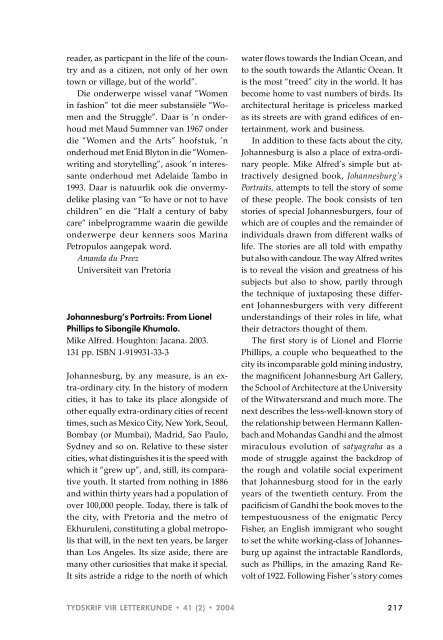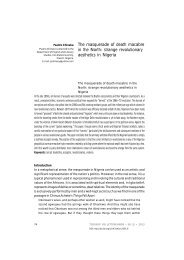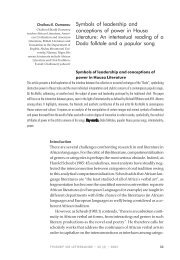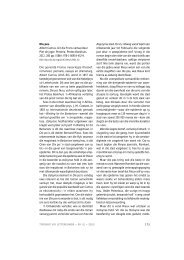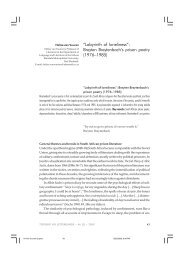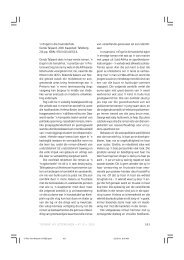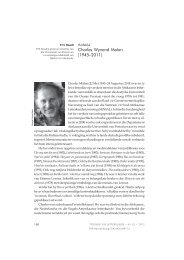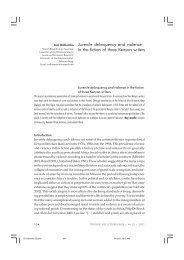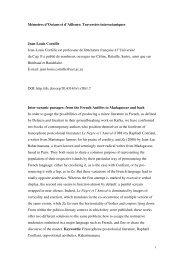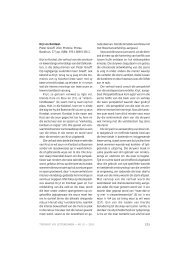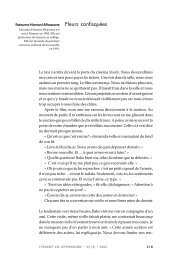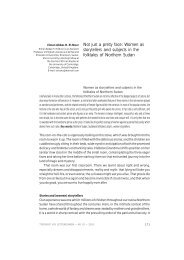Create successful ePaper yourself
Turn your PDF publications into a flip-book with our unique Google optimized e-Paper software.
eader, as particpant in the life of the countryand as a citizen, not only of her owntown or village, but of the world”.Die onderwerpe wissel vanaf “Womenin fashion” tot die meer substansiële “Womenand the Struggle”. Daar is ’n onderhoudmet Maud Summner van 1967 onderdie “Women and the Arts” hoofstuk, ’nonderhoud met Enid Blyton in die “Womenwritingand storytelling”, asook ’n interessanteonderhoud met Adelaide Tambo in1993. Daar is natuurlik ook die onvermydelikeplasing van “To have or not to havechildren” en die “Half a century of babycare” inbelprogramme waarin die gewildeonderwerpe deur kenners soos MarinaPetropulos aangepak word.Amanda du PreezUniversiteit van PretoriaJohannesburg’s Portraits: From LionelPhillips to Sibongile Khumalo.Mike Alfred. Houghton: Jacana. 2003.131 pp. ISBN 1-919931-33-3Johannesburg, by any measure, is an extra-ordinarycity. In the history of moderncities, it has to take its place alongside ofother equally extra-ordinary cities of recenttimes, such as Mexico City, New York, Seoul,Bombay (or Mumbai), Madrid, Sao Paulo,Sydney and so on. Relative to these sistercities, what distinguishes it is the speed withwhich it “grew up”, and, still, its comparativeyouth. It started from nothing in 1886and within thirty years had a population ofover 100,000 people. Today, there is talk ofthe city, with Pretoria and the metro ofEkhuruleni, constituting a global metropolisthat will, in the next ten years, be largerthan Los Angeles. Its size aside, there aremany other curiosities that make it special.It sits astride a ridge to the north of whichwater flows towards the Indian Ocean, andto the south towards the Atlantic Ocean. Itis the most “treed” city in the world. It hasbecome home to vast numbers of birds. Itsarchitectural heritage is priceless markedas its streets are with grand edifices of entertainment,work and business.In addition to these facts about the city,Johannesburg is also a place of extra-ordinarypeople. Mike Alfred’s simple but attractivelydesigned book, Johannesburg’sPortraits, attempts to tell the story of someof these people. The book consists of tenstories of special Johannesburgers, four ofwhich are of couples and the remainder ofindividuals drawn from different walks oflife. The stories are all told with empathybut also with candour. The way Alfred writesis to reveal the vision and greatness of hissubjects but also to show, partly throughthe technique of juxtaposing these differentJohannesburgers with very differentunderstandings of their roles in life, whattheir detractors thought of them.The first story is of Lionel and FlorriePhillips, a couple who bequeathed to thecity its incomparable gold mining industry,the magnificent Johannesburg Art Gallery,the School of Architecture at the Universityof the Witwatersrand and much more. Thenext describes the less-well-known story ofthe relationship between Hermann Kallenbachand Mohandas Gandhi and the almostmiraculous evolution of satyagraha as amode of struggle against the backdrop ofthe rough and volatile social experimentthat Johannesburg stood for in the earlyyears of the twentieth century. From thepacificism of Gandhi the book moves to thetempestuousness of the enigmatic PercyFisher, an English immigrant who soughtto set the white working-class of Johannesburgup against the intractable Randlords,such as Phillips, in the amazing Rand Revoltof 1922. Following Fisher’s story comesTYDSKRIF VIR LETTERKUNDE • 41 (2) • 2004 217


